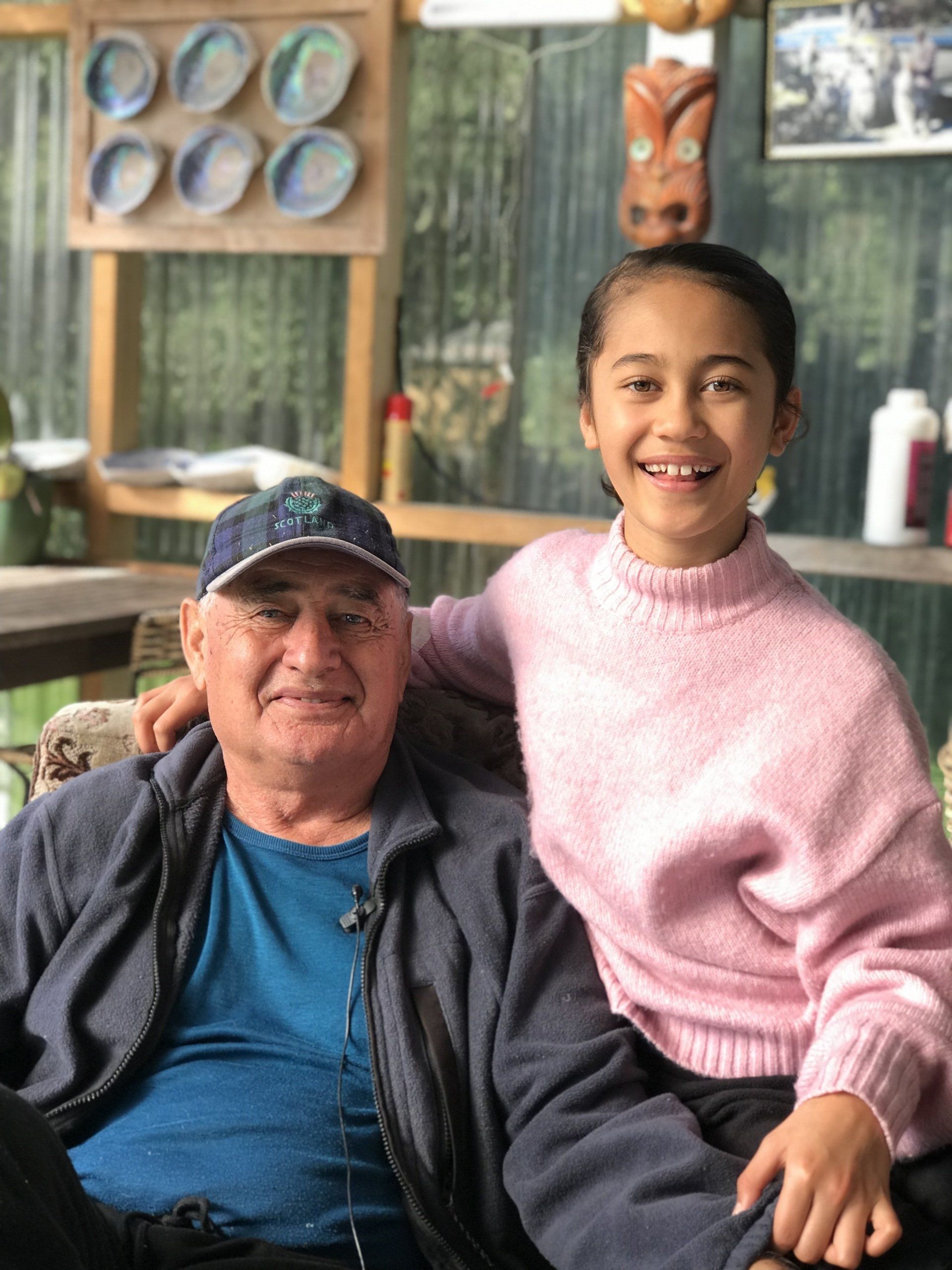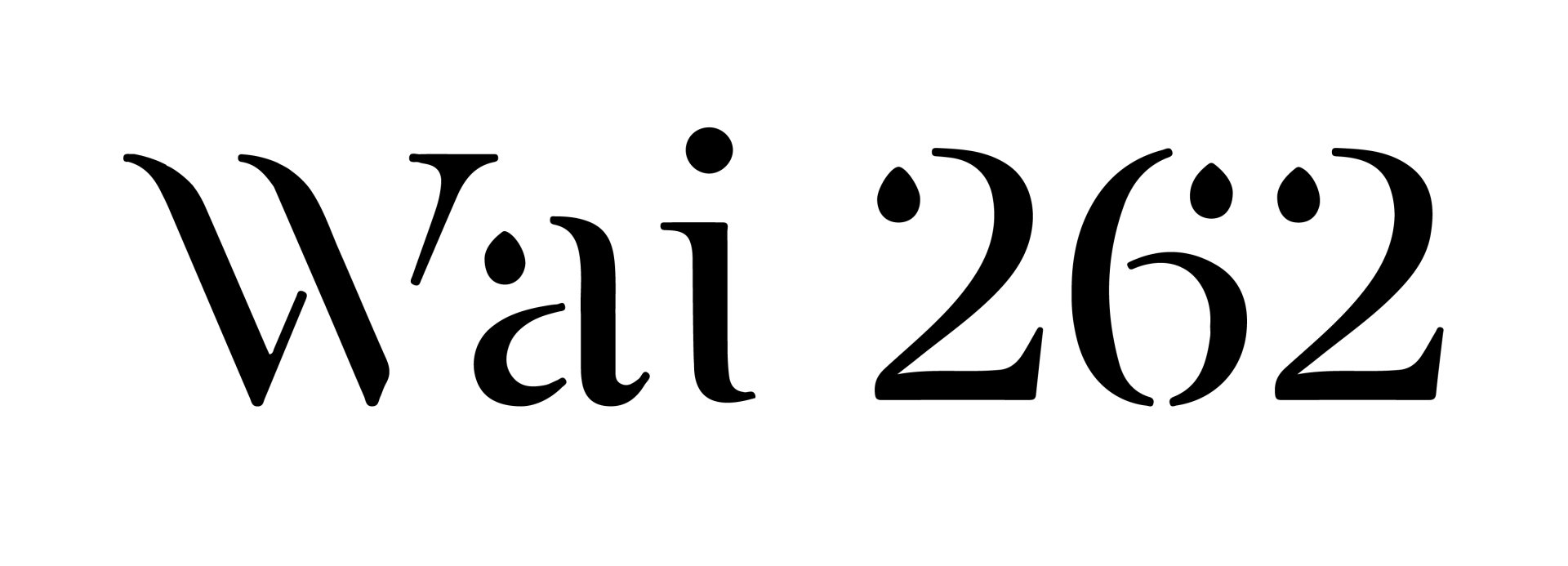- It is almost 31 years since the rangatira from around Aotearoa lodged the Wai 262 on 9 October 1991.
- Decades later, we hear from the taonga and mātauranga Māori expert witnesses and their whānau who presented at Wai 262 hearings.
Joe McClutchie - Uepohatu Marae, Uepohatu
Three generations of Wai 262 legacy holders - Joe McClutchie, Areta McClutchie and Josie McClutchie
In the ngāhere with Joe McClutchie
Joseph (Joe) McClutchie vividly remembers the first hikoi from Te Whānau-ā-Apanui to Ngāti Porou.
It was 1986 and the group set off from the Kereu Bridge on SH35 in Te Kaha, heading over the Raukūmara range to Ruatōria.
“Once the headwaters of the Kereu were reached the mountains closed in. When you looked up, all you could see was bush, stream here, stream there, and I thought ‘where do we go now?’” Joe said.
This was the first of 16 hikoi that would take place from 1986 to 1998, traversing the Ara Tīpuna that was steeped in rich history and carried great significance for the people of Te Whānau-ā-Apanui and Ngāti Porou.
The first hīkoi took two and a half days with a support driver and was to help put whakapapa and kōrero to the trail.
“It was a privileged experience, seeing how it unfolded and came together. The experience is what some would refer to as a spiritually guided journey,” Joe said.
The classroom of Te Wao Nui o Tāne
Two years earlier in 1984, concerns grew in the Gisborne community over youth, including Māori, who were displaying bad behaviour and would hang around the city streets late at night.
Joe said many businesses were upset with the new scene and the damage caused to their premises.
“This resulted in complaints being aired in the media and newspapers, portraying a message that Māori were not taking care of their people,” Joe said.
In response to these issues, Te Rūnanga o Ngāti Porou held a community hui at Te Poho-o-Rawiri Marae in Gisborne and asked Joe to present ideas of intervention and programmes to help.
Several kaupapa Māori programmes were developed to use the ngāhere as alternative education outside the classroom.
“Each hikoi had a kaupapa, and it was the ngāhere that made the difference,” he said.
Over this time Joe continued to research more kōrero of the Ara Tīpuna from Ngāti Porou kaumātua and kuia, but information was limited so research was pursued from Te Whānau-ā-Apanui as well.
“Whakapapa and information became important and crucial for all hikoi,” Joe said.
Protecting our taonga
Over the years Joe was involved with the hikoi, the Ara Tīpuna trail and Te Wao Nui o Tāne were always left untouched and unmarked.
“There was a pristine, undisturbed look of the Raukūmara range. Not many people had walked through there so it was in its natural state,” Joe said.
“You know, like the trees, the way they had to mingle with each other and the clarity of the water. The hillsides were not eroding like they are now at the outskirts of the native bush where it goes into developed land.”
These were the taonga Ngāti Porou were trying to protect in their Wai 262 claim.
Following the 1998 closing of the hikoi, Joe was aware of other people who ignored the sacredness of the Ara Tipuna and had gone out and done their own walks.
In April of 1999, Joe was an expert witness at the Waitangi Tribunal hearing at Uepohatu Marae, Ruatoria.
“In the earlier days, the Department of Conservation asked my staff where the trail was. Other people have been picking up the information in documentation, and experienced trampers have gone in there and we’ve found their rubbish.
“We know hunters fly in there and leave their rubbish and we’ve found Dutch names and dates carved on trees,” Joe told the tribunal.
When the groups were on guided hīkoi, the utmost respect was shown to the ngāhere.
“When we take our people there, we understand the significance and I understand the conditions that were given to me.”
“We don't rub our hands down the korowai on the side of the cliff, but we can see big scratch marks where people just can't resist touching it. We don't allow our people to do that out of respect,” Joe said.
Wāhi tapu
The underlying issue of it all, Joe said, is the concept of wāhi tapu.
“The trail is a place of sacredness that you’re walking on. This was a war trail for Te Whānau-a-Apanui coming through to Ngāti Porou.
“Thousands of people were killed, and the river ran deep red from the bloodshed.
“The wāhi tapu was where people blessed themselves on the way home so that became the underpinning of behaviour,” he said.
Nearly 40 years ago Joe was given the blessing to lead hīkoi through the Ara Tīpuna.
He was given the knowledge of where the trail went and the rich whakapapa that surrounded it, for the purpose of bringing people together.
Which is why, in his opinion, it's not relevant or appropriate to open the trail up as a public walkway.
“Because it’s tapu to our tīpuna and it’s tapu to us.”
The Raukūmara Range today
The Raukūmara requires urgent care after being attacked by possums, deer, goats, rats and stoats over many years.
These pests have destroyed the canopy and understory of the ngāhere, and attacked threatened species to the point of local extinction.
As a result of this sustained attack from the explosion of pests, soil health is poor and there’s a decline in seeds and new growth.
In 2020, years of determination to heal the Raukūmara Range resulted in the funding given to Ngāti Porou and Te Whānau-ā-Apanui in partnership with the Department of Conservation Te Papa Atawhai to restore the mauri of the forest.
Raukūmara NZ Geographic story link - Hikoi
- Thirty one years ago on 9 October 1991, rangatira from around Aotearoa lodged the Wai 262 claim with the Waitangi Tribunal.
- There were 25 hearings throughout Aotearoa from 1998 until 2007.
- More than 130 taonga and mātauranga Māori experts presented at these hearings, some of who were rangatahi at the time.
- These hearings were held in Te Tai Tokerau, Tāmaki Makaurau, Te Tairāwhiti, Waiariki, Takitimu, Te Upoko o te Ika and Whakatū.
- The last ten hearings were presided over by Chief Judge Joe Williams.



